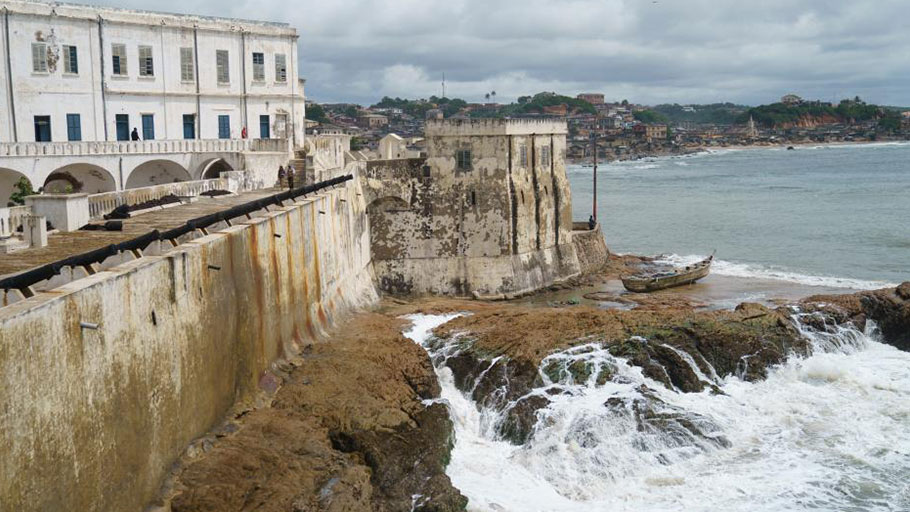

The story begins with two sisters, one sold into slavery, and the other married to a slave trader who lives at the Cape Coast Castle. Taking place in what is now known as Ghana and the United States, Gyasi’s story begins in the 1700s and continues through the present day. Yaa Gyasi’s novel Homegoing has a project similar to Saidiya Hartman’s in that she is attempting to recover a multitude of lost and forgotten narratives of both Africans who participated in the slave trade as traders, and as Africans ruthlessly sold into slavery. This Castle for her and many others is a place to enact her identity of both real and imagined pasts, and remembering Cugoano’s narrative allows for the Castle to be the site of memory that she can recognize and reclaim herself and her ancestors. The inclusion of the filth, his bowels spilling out, the shame he feels, the smell of the air- all details Hartman wanted to experience for herself in order to gain a better understanding of her past and present as a descendant of people who may have been prisoners in this Castle. Hartman recreates for herself and Cugoano the story that he should have been able to tell. He learned to take shallow gulps of the fetid air. He no longer recoiled when vermin scuttled across his body. The odor of rotting things no longer made his stomach heave. After the first day, his eyes adjusted to the gloom and he saw more clearly the men and boys imprisoned in the room. The filth from the floor clung to his legs and buttocks and he made an even worse mess of things. Inside the cell, it was so dark he could barely discern the other bodies chained to the wall. Cugoano’s first moments in the dungeon in Hartman’s retelling are as follows: Her account reclaims the emotions that are missing from Cugoano’s time in the dungeon, and her writing allows her to reach out and touch the prisoners as she wanted. Hartman remembers Cugoano’s experiences through the eyes and voice of a child, rather than that of a man whose writing must be shrewd with emotion in order to garner the support of white abolitionists.

She does what Morrison refers to as “drawing back the veil” that once muted indescribable horrors. In her narrative, she includes many details that were included in Cugoano’s original telling, but she makes them more personal under her pen then there were able to be under Cugoano’s. Then in an attempt to rewrite the memories of Ottobah Cugoano, who left out of his narrative the horrors that were not to be described, Hartman takes readers back to the moment of his capture and remembers his time in the dungeon.
Castle on the coast of africa full#
Her sincere wish is “to reach through time and touch the prisoners” who were once held in the dungeon.Because of the frequently unmet desire in her to know the stories of the enslaved, Hartman begins to recognize that the only stories that are to be told will be the ones told by her.She gives readers a full description of what time in the dungeon would have been like for an enslaved person, describing the muck, disease, blood, stench, and physical violence they endured before the Middle Passage. Rather than connect with the edifice of the Castle, her goal is to use it as a place to revive memory and being. Because the dungeons feel empty for her, nothing enduring “except blood, shit, and dirt,” Hartman struggles again with the feeling of profound loss and disappointment. In many ways, the ingestion she imagined as she walked through it represents the ingestion of the stories of the enslaved, swallowed and never given air to breathe again. Hartman depicts The Cape Coast Castle as an entity that ingests those who walk through its tunnels. Clair asks and imaginatively delves into the interior lives of those who had spent time at the Cape Coast Castle and how their lost narratives connect to the narrative of her own family and African-Americans at large. In her second chapter devoted to the memory of time in slave Castles, “So Many Dungeons,” Hartman does the work that St. He says that the journey of memory of the Castles can only be made in the imagination. Clair asks how historians can cope with the fact that the enslaved are silent. Clair’s book, The Door of No Return: The History of Cape Coast Castle and the Atlantic Slave Trade, details the logistical history of the Cape Coast Castle- its day-to-day operations, the facts of the lives of the officers and soldiers who worked and lived there, the design and architecture of the building, but missing from his extensive history are the voices of those for whom the Castle and its dungeons were built.


 0 kommentar(er)
0 kommentar(er)
